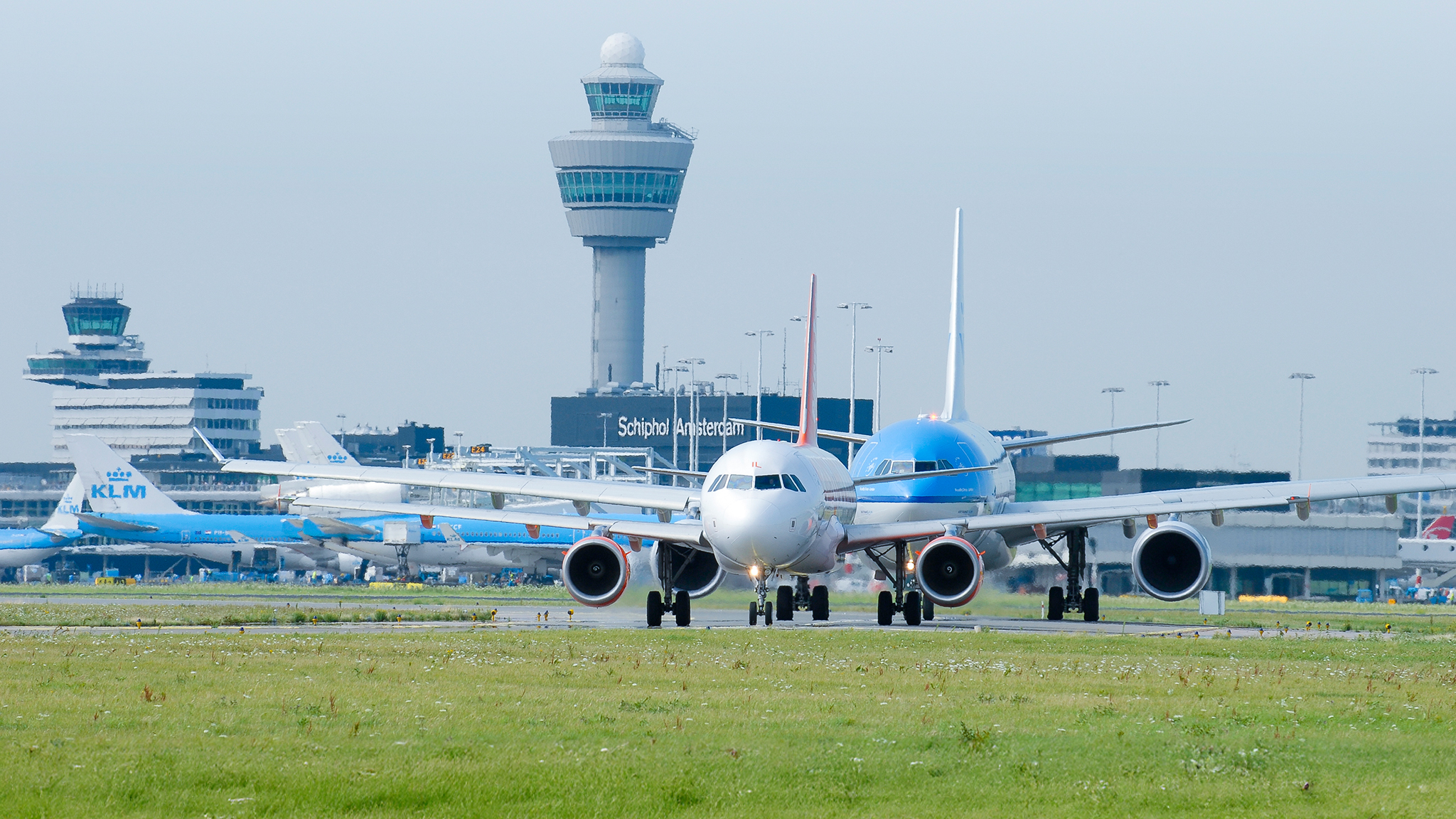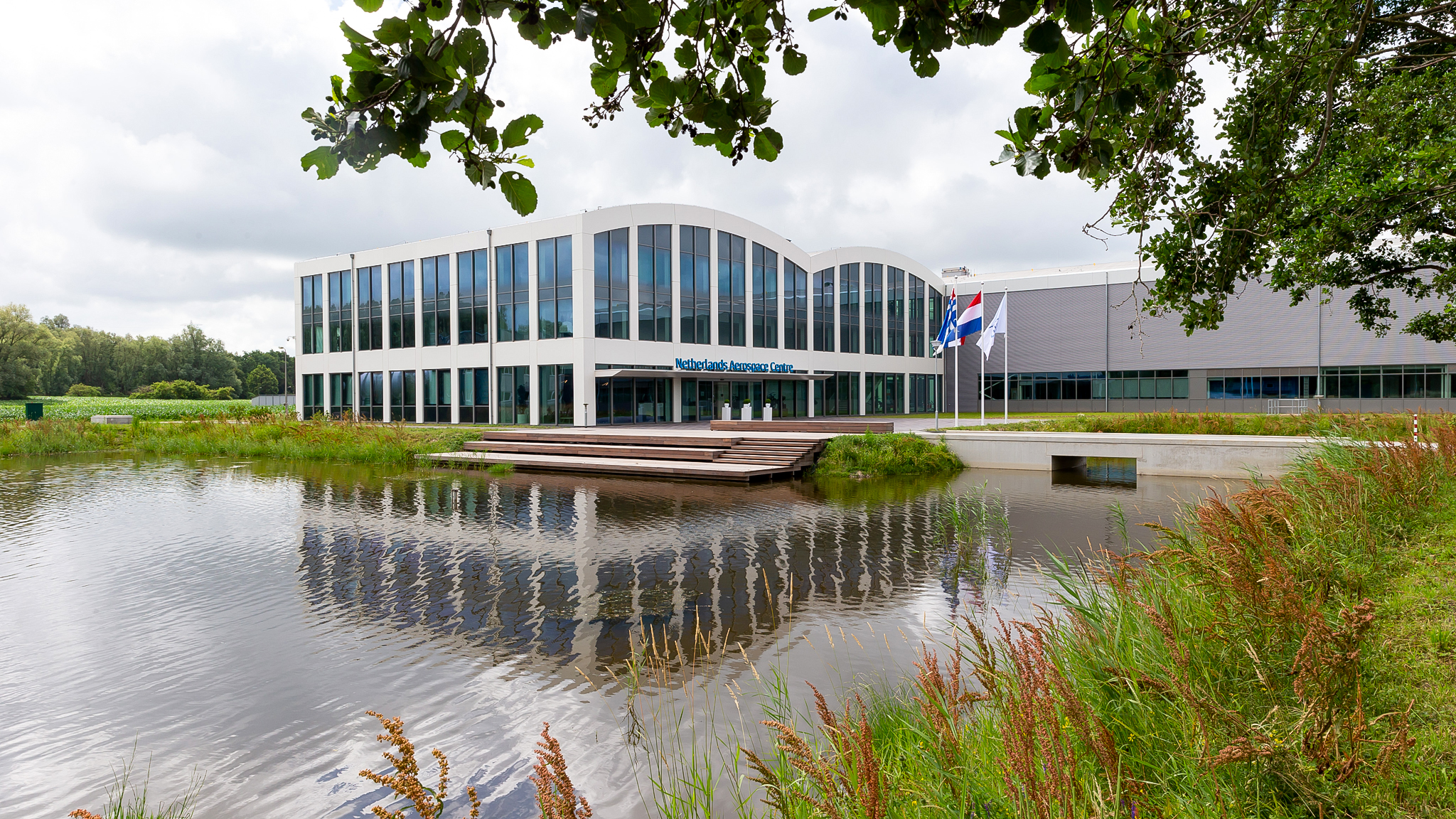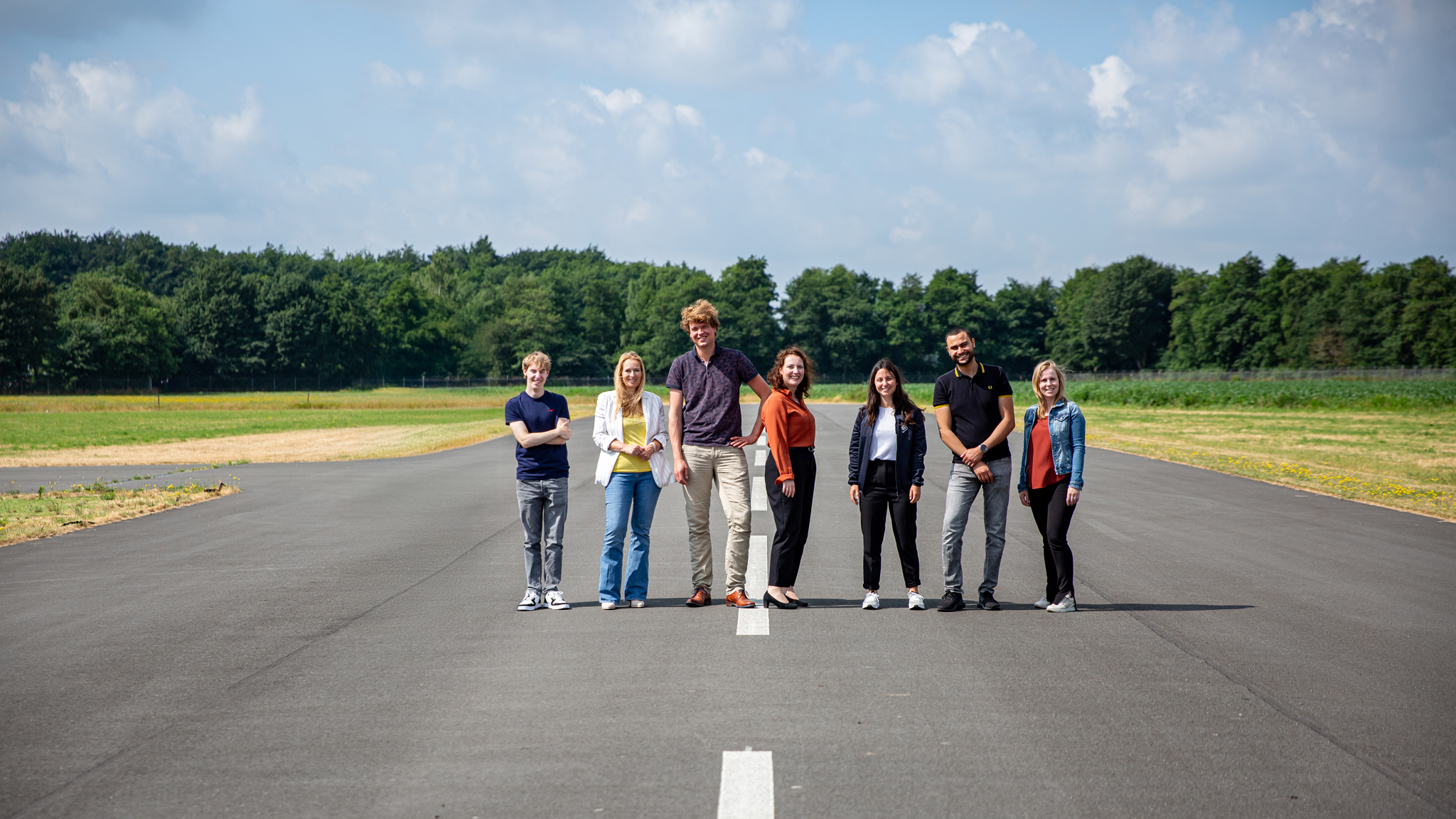The Dutch government and the aviation industry agreed in 2019 to reduce harmful greenhouse gas emissions. The Sustainable Aviation Agreement agreed that CO2 emissions from flights departing from the Netherlands should be back to 2005 levels by 2030, a 9% reduction compared to 2019. ‘We were asked by Schiphol to investigate what it would take to bring Schiphol’s CO2 emissions in line with the Paris Climate Agreement,’ says Bram Peerlings, Aviation Sustainability Consultant at NLR. In parallel, Schiphol commissioned research firm CE Delft to investigate this.
Cumulative emissions
The Paris Agreement agreed to limit warming to well below two degrees Celsius by 2050 and aim for 1.5. Slowing down warming requires reducing net greenhouse gas emissions to zero. Peerlings: ‘Many targets are about reducing or offsetting a certain amount of emissions in a specific year, such as aiming for net zero by 2050. But that is not enough, because ultimately, global warming is caused by cumulative greenhouse gas emissions: the accumulated emissions over a period of time. The IPCC, the UN climate panel, has calculated how much we as humanity are still allowed to emit until 2050: the global CO2 budget, set for the period 2020 to 2050. This budget is bigger or smaller, depending on how much warming we are willing to accept and how sure we want to be that we don’t go over that. However, those budgets only exist on a global scale and not for individual countries or sectors. And that is exactly what we did with this study.’
Technological breakthroughs
The researchers then compared some of those budgets with projected CO2 emissions over the same period. The study found that those projected cumulative CO2 emissions exceed Schiphol-specific CO2 budgets in line with 1.5 degrees of warming. ‘So if Dutch aviation wants to make its contribution, emissions have to come down faster. Within the target advocated by Schiphol, this means a 30% reduction for 2030 compared to 2019, against a government target of 9% less and an already expected 20% reduction. The problem with wanting to become more sustainable faster is that major technological breakthroughs for emission reduction in aviation are unfortunately still quite far away. Here and there, the aviation industry does commit to biofuel and other more sustainable fuels, but we are many years away before these are introduced on a large scale.’ Meanwhile, however, the emissions continue, despite the fact that flights are now becoming more efficient and airlines are acquiring new aircraft. KLM, for instance, has started phasing in the Airbus A320neo on its European routes. This new type of aircraft reduces CO2 emissions by 15-20% compared to older aircraft of the same size.
Short and long-haul flights
‘On the one hand, this is a great improvement, but compared to the total emissions of all flights departing from Schiphol, the expected impact is limited. This is due to the difference between short and long-haul flights. Some 75% of flights from Schiphol depart for a destination within 2,000 kilometres, mostly within Europe. However, these flights are only responsible for 20-25% of CO2 emissions. On the other hand, this also means that the 25% longest flights, beyond 2,000 kilometres, are responsible for 75% to 80% of the emissions. So in the Airbus example, we are really only talking about 20% of 20% – less than 5% of total emissions.’ NLR also came to such a sobering conclusion in its search for measures to be in line with Paris. ‘As important as fleet renewal with more fuel-efficient aircraft, alternative fuels and more efficient flight paths are, it takes more than just improved technology,’ Peerlings stressed. ‘The only option left then – unfortunately – is to reduce the number of flights.’ This could be achieved by reducing airport capacity but is also expected to happen if ticket prices go up – for example, by making airlines pay more for their emissions, or through taxes. ‘Given the large contribution of a relatively small proportion of long-haul flights revealed by our study, that segment would be a logical focus area. After all, the emission reduction for every flight removed would be greater.’
Air Passenger Tax
Schiphol used the report to further advocate for policies and regulations to make aviation more sustainable. For example, Schiphol called for an increase in the air passenger tax for long-haul flights, an intention that the new cabinet has adopted. The desire is further to invest that money in aviation. ‘Currently, every passenger departing from Schiphol pays €29.05 air passenger tax, regardless of whether you fly to Vienna or Japan. Raising the air passenger tax on precisely those longer flights will make those tickets more expensive, and fewer people are likely to fly that far. Thereby, it is likely to contribute to reducing CO2 emissions from aviation.’ If the proceeds of the air passenger tax are reinvested in the sector, the Dutch aviation sector may also be able to move away from fossil fuels faster. But we are not there yet. ‘Whether these measures are actually implemented depends largely on politicians deciding on them,’ Peerlings concludes.

This is an article from TO2MORROW 2024. Click on the image above to download the full edition of the magazine, or click here to visit the website of the TO2 federation. The magazine is available in Dutch and English.
You can find the report on which the article is base here: ‘CO2 reduction targets for Amsterdam Airport Schiphol based on remaining IPCC CO2 budgets up to 2050’.



